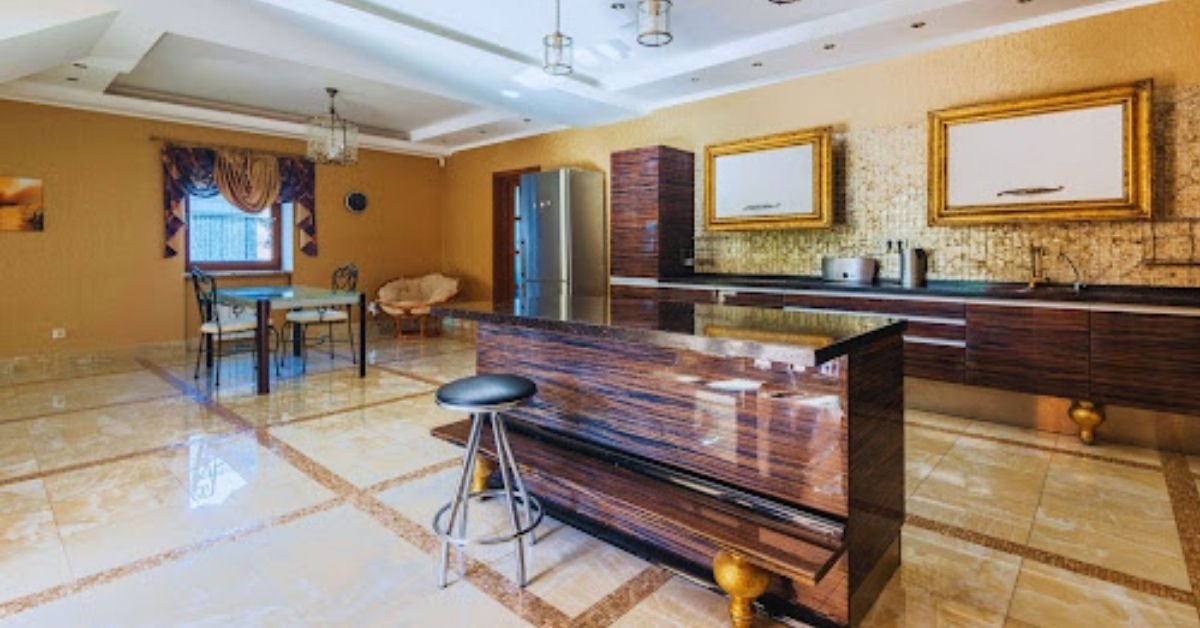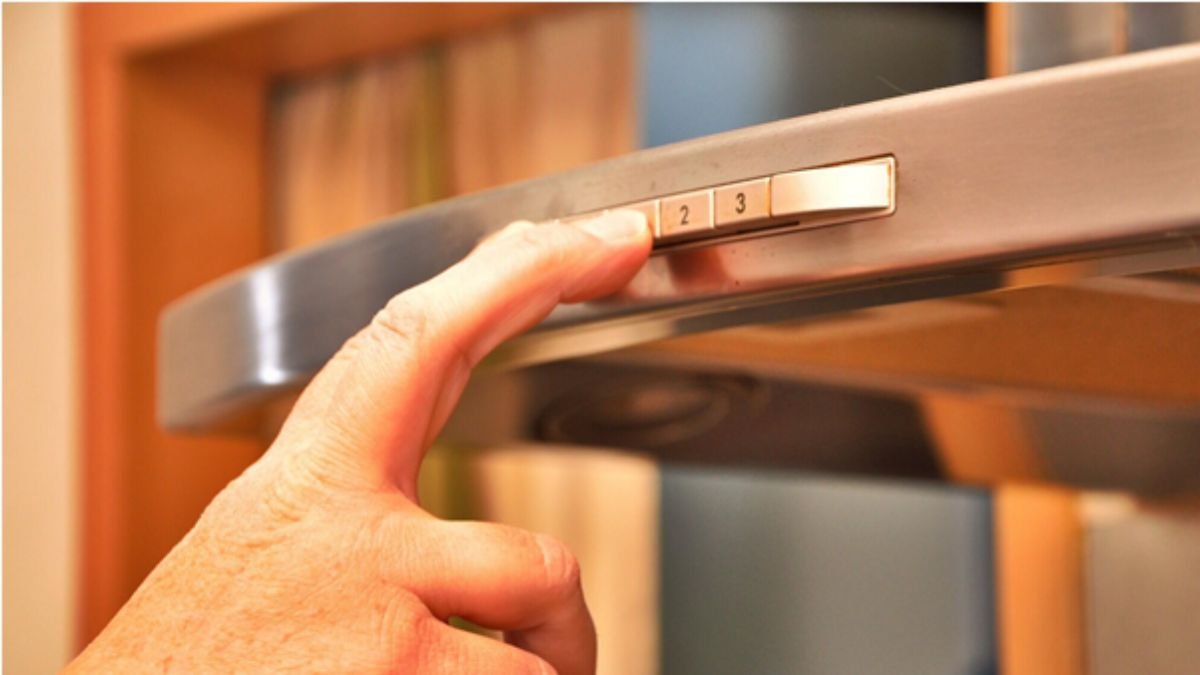Home Decor
Creative Lighting Strategies for Modern Interior Design

The use of lighting in interior design has a significant effect. It has a profound effect on both a space’s usability and overall appearance. Modern lighting techniques are adopted which offer a multitude of choices for improving interior spaces with the advancement of technology. Here we examine seven innovative lighting strategies that revolutionize contemporary interior design. It includes real-world examples and technical insights as well.
1. Accent Lighting
Accent lighting can be employed to emphasize specific elements within a room, such as architectural work, artwork, or decorative pieces. This technique uses directional light sources like spotlights, track lights, and wall-mounted fixtures to create focal points. For example, highlighting a gallery wall with a track lighting system can bring attention to each piece, adding depth and visual interest to the arrangement.
Technical Insight:
- Lighting Angle: To reduce glare and shadows, angles between 30 and 45 degrees are ideal.
- Light Intensity: To achieve the desired effect, use dimmable fixtures to adjust brightness.
Tips:
- Select lighting fixtures that go well with the room’s design.
- To draw attention to distinctive architectural details, use accent lighting.
- For a layered effect, combine various accent light types.
2. Task Lighting
Task lighting is more focused on providing adequate illumination for specific activities such as, cooking, working, reading and writing, etc. By using the common fixtures which include desk lamps, pendant lights, and under-cabinet lights. To improve safety and efficiency during food preparation, kitchen countertops can be illuminated by installing under-cabinet LED strips.
Technical Insight:
- Color Temperature: For task lighting, a color temperature of 4000K to 5000K is ideal because it produces a clear, bright light.
- CRI (Color Rendering Index): A CRI (Color Rendering Index) of 90 or higher improves visual accuracy, which is important for tasks that call for accuracy.
Tips:
- Place task lights so that the work area is not shadowed.
- For flexibility, use fixtures that can be adjusted.
- To increase productivity, add task lighting to your home office and study spaces.
3. Ambient Lighting
Ambient lighting ensures a comfortable level of brightness throughout a space by providing overall illumination. Common sources include chandeliers, recessed lighting, and ceiling-mounted fixtures. Recessed LED downlights, for instance, can provide a living room with consistent lighting that fosters a comfortable ambiance without producing unbearable glare.
Technical Insight:
- Lumens: Determine the lumen requirements for each room size (living rooms, for example, usually require 10–20 lumens per square foot).
- Light Distribution: To evenly cover larger areas, choose fixtures with wide beam angles.
Tips:
- Utilize a variety of lighting sources to avoid shadowy areas.
- Put in dimmer switches so that the light can be adjusted.
- Choose light fixtures that complement the theme of the room’s décor.
4. Layered Lighting
Using various light sources to create a dynamic and well-balanced lighting scheme is known as layered lighting. Depth and adaptability are guaranteed when ambient, task, and accent lighting are combined. This could include under-cabinet LED task lighting, pendant lights over an island for accent lighting, and overhead recessed lights for natural lighting in a modern kitchen.
Technical Insight:
- Control Systems: Use intelligent lighting controls to smoothly adjust various layers.
- Energy Efficiency: To cut down on energy use and extend lifespan, implement LED technology at every layer.
Tips:
- Early in the design process, plan the lighting layout.
- For a well-balanced appearance, use a variety of light fixtures.
- When possible, use natural light.
5. Cove Lighting
In recessed spaces like wall ledges or ceilings, cove lighting—a type of indirect lighting—is mounted. With this method, architectural features are highlighted by a soft, diffused glow. One way to add a sophisticated and dramatic effect to a bedroom is by using cove lighting in a tray ceiling.
Technical Insight:
- LED Strips: Utilize an addressable LED strip for precise control over color and brightness.
- Installation: Make sure the nook is sufficiently deep to hide the source of light and shield it from direct sunlight.
Tips:
- Try out some color-changing LEDs to create a more dynamic look.
- Cove lighting can help create the illusion of more space.
- For a complete lighting design, combine cove lighting with additional light sources.
6. Pendant Lighting
Pendant lights are multipurpose ceiling-mounted fixtures with decorative and functional uses. They are perfect for making a statement in kitchens, dining rooms, and foyers because they come in a variety of styles and materials. For example, a group of pendant lights above a dining table can function as a centerpiece and offer sufficient lighting for mealtime activities.
Technical Insight:
- Hanging Height: Pendants should hang 30-36 inches above the surface of dining tables.
- Light Output: To guarantee that the space is well-lit without being unduly bright, select fixtures with a sufficient lumen count.
Tips:
- Choose pendant lights that blend in with the design of the space.
- For adjustable lighting, use dimmable pendants.
- For a striking look, think about clustering several pendants together.
7. Smart Lighting
Smart lighting systems provide convenience and customization by allowing users to control lighting via voice commands, automation, or mobile apps. For a cohesive living space, these systems can be combined with other smart home appliances. For example, using an individually addressable LED strip can be programmed to change colors and patterns, creating dynamic lighting effects for different moods or occasions.
Technical Insight:
- Compatibility: Verify that smart lighting fixtures and bulbs work with the current smart home networks.
- Automation: Based on daily activities or the time of day, set schedules and routines to automatically adjust the lighting.
Tips:
- If you want dependable smart lighting, spend money on high-quality products.
- Examine the possibilities for automated lighting control with motion sensors.
- Adjust lighting scenes to correspond with various events and emotions.
Cutting-edge lighting designs greatly improve both functionality and aesthetics, making them indispensable to contemporary interior design. Designers can create dynamic and inviting interiors that accommodate a range of needs and preferences by utilizing accent, task, ambient, layered, cove, pendant, and smart lighting. Modern interior design projects require lighting because each technique has its advantages and can be customized to meet specific design objectives.
Home Decor
How Vent Hood Cleaning Services Can Improve Kitchen Safety

When it comes to maintaining a clean and safe kitchen, vent hood cleaning services play a crucial role. Commercial and residential kitchens alike depend on well-functioning range hoods. This is because they are used to manage grease, smoke, and other airborne particles.
Regular cleaning is not just a matter of aesthetics. It is a necessary step to ensure safety and efficiency. Let’s explore how vent hood cleaning services can significantly improve kitchen safety and performance.
Read on and let’s get started!
Prevents Fire Hazards
One of the primary reasons to invest in a professional hood cleaning service is to reduce the risk of fire. Grease and flammable residues accumulate inside:
- range hoods
- ducts
- kitchen air vents
If left uncleaned, this buildup can easily ignite, leading to dangerous kitchen fires. By scheduling routine kitchen hood cleaning services, especially for commercial kitchens, you drastically reduce the chances of a catastrophic fire, ensuring a safer environment for everyone.
Improves Air Quality
Poorly maintained vent hoods can affect indoor air quality. Cooking produces smoke, grease, and odors that, if not properly vented, can linger in the kitchen and surrounding areas.
Regular kitchen air vent cleaning ensures that these contaminants are effectively removed. Thus, providing a cleaner and healthier breathing space.
A clean range hood allows for better airflow. Thus, reducing the risk of respiratory issues and promoting a more comfortable kitchen environment.
Increases Efficiency of Ventilation Systems
Kitchen systems rely on clean and efficient airflow. When the hood is clogged with grease and grime, it has to work harder to filter out smoke and steam.
This not only puts a strain on the ventilation system but also leads to higher energy consumption. Kitchen system cleaning services can optimize the performance of your vent hood by removing blockages and restoring proper airflow.
This, in turn, prolongs the lifespan of your equipment and reduces energy costs.
Meets Health and Safety Regulations
For restaurants and commercial kitchens, staying compliant with health and safety regulations is non-negotiable. Grease buildup in kitchen hoods can lead to violations during health inspections. It could result in fines or even temporary closure.
A professional kitchen hood cleaning service ensures that your kitchen meets all the necessary fire and safety codes. Whether you are looking for hood cleaning in Traverse City, Michigan, or anywhere else, maintaining a regular cleaning schedule helps you pass inspections with ease.
Enhances Overall Cleanliness and Hygiene
Cleanliness is key to maintaining a safe kitchen environment. Dirty range hoods not only contribute to foul odors but can also become a breeding ground for bacteria and mold.
Kitchen cleaning solutions, including regular vent hood cleanings. This can ensure that your kitchen remains sanitary. This is especially important for food preparation areas, where maintaining high standards of hygiene is critical.
A thorough cleaning of your range hood and air vents eliminates:
- grease
- grime
- contaminants
All these, otherwise, can compromise cleanliness.
Vent Hood Cleaning Services Can Improve Kitchen Safety
Investing in professional vent hood cleaning services is an essential part of kitchen maintenance. Regular cleaning is a crucial step toward creating a safer and more efficient kitchen.
Scheduling routine kitchen system cleaning services will enhance performance and reduce risks. This is whether you’re running a commercial kitchen or maintaining your home.
Don’t overlook the importance of proper hood cleaning services. It’s a small effort that goes a long way in protecting your kitchen.
Should you wish to read more, visit our blog page. We’ve got more for you!
Home Decor
What to Expect in a Suicide Cleanup?

Suicide involving unattended deaths is going to be worse because the body may liquefy before it’s discovered. This is going to bring a host of pathogens and bloodborne diseases to anyone who comes in contact with the bodily fluids, and this is where the experts enter the picture. See more about bodily fluids when you go to this page.
Sometimes, the aftermath of a suicide results in the emotional devastation of many loved ones and it can be a headache for property owners. It can take its toll when there is guilt and grief that family members have to deal with. The last thing that these members want to do would be to clean everything afterward.
However, after the police have left the crime scene, there will be lots of blood spatters or organic matter that may be left behind. This is especially true when a gun or a knife is involved. If one feels overwhelmed, some experts offer a systematic and safe approach to the cleanup process.
What Do You Mean by a Biohazard Cleanup?
When someone dies, especially in a traumatic manner such as suicide, the scene may contain bodily fluids and tissues that can be hazardous. Blood, for example, is considered a biohazard due to the possibility of infectious diseases.
Any surface that comes into contact with these fluids, including walls, floors, carpets, and furniture, may be contaminated and require thorough disinfection. In some cases, the drywall or the carpets may be removed, especially if they can’t be cleaned. The primary goal of people who clean up is to restore the affected area to a safe condition while preventing further contamination of potentially harmful substances.
Also, biohazardous materials cannot be handled like ordinary waste, instead, they require special cleaning agents and disposal methods. Without these precautions, individuals involved in the cleanup process may face health risks or spread the contaminants to their communities.
What are the Risks of DIY?
Some people may think about handling the cleaning on their own, but this isn’t often a good idea. Without proper protective equipment, they are exposing themselves to bacteria and viruses that are in the form of hepatitis or HIV. Coming into contact with these materials without appropriate precautions can lead to infection and long-term health complications that many people should avoid at all costs.
Cleaning up after a traumatic death can have significant emotional consequences where family members attempting to clean a loved one’s remains may find the process emotionally distressing. It can worsen grief and prolong the healing process, where the psychological impact should not be underestimated. This is why professional cleanup services are needed because they can help alleviate some of this burden.
What to Expect with the Process?

The team receives a call, and after they arrive, they will conduct a thorough examination of the area. It’s going to help them know the kinds of products that they’re going to use and the number of personnel that they need for the job. The entire process is going to consider the amount of biological materials present and how long it takes to discover the body.
To prevent cross-contamination, professionals will set up containment zones around the room or the building so that other parts of the property are not exposed to hazardous materials. The professionals also wear personal protective equipment including gloves, masks, face shields, and biohazard suits, to protect themselves from exposure to infectious agents.
Any items or materials that have come into contact with biohazardous waste, such as blood-soaked carpets or porous furniture, must be removed from the scene. In some cases, this may involve removing sections of carpets or drywall, especially if fluids have seeped into these areas. Cleanup teams are equipped to handle and dispose of biohazardous waste according to strict legal and environmental guidelines, and they often go to the medical incinerators for disposal of the biohazards.
When the organic matter has been removed and sealed, the remaining surfaces must be thoroughly cleaned. This process typically involves using industrial-grade and enzyme-based cleaning agents designed to neutralize pathogens and eliminate any remaining biological matter.
Disinfection is important to ensure that the area is safe for future occupancy. In some cases, additional treatments, such as deodorization, may be necessary to remove lingering metallic scents from the blood from the area. Read info about the disinfection process at this link: https://www.canada.ca/en/public-health/services/publications/diseases-conditions/cleaning-disinfecting-public-spaces.html.
All tools used during the cleanup must be washed or disposed of properly. This includes items like mops, brooms, brushes, and microfiber cloths, which can become contaminated during the cleaning process.
Once the scene has been fully cleaned and disinfected, some level of restoration may be required, depending on the extent of the damage. This could involve the installation of new floorboards or buying a new carpet and replacing each one that’s been affected. In cases where severe damage has occurred, additional renovations may be needed to restore the property to its original condition.
Home Decor
Hair Supplements for Men: What to Look For

Hair health is a common concern among men, especially as they age. Factors like genetics, stress, and diet can all impact the strength and appearance of your hair. Fortunately, hair supplements can help address these issues by providing essential nutrients that support hair growth and overall hair health. In this post, we’ll explore what men should look for in hair supplements and how they can make a difference.
Understanding Hair Health in Men
Hair health in men can be influenced by a variety of factors. Genetics play a significant role, with conditions like male pattern baldness being a common concern. However, other factors such as stress, poor nutrition, and exposure to environmental toxins can also contribute to hair thinning and loss.
Maintaining a balanced diet is crucial for keeping your hair healthy. However, even with a good diet, it can be challenging to get all the nutrients your hair needs. This is where hair supplements come into play. By incorporating the right hair vitamins into your routine, you can provide your hair with the nutrients it needs to grow stronger and fuller.
Benefits of Hair Supplements for Men
Hair supplements are specifically formulated to address the unique needs of men’s hair. They often contain a blend of vitamins, minerals, and other essential nutrients that support hair growth and prevent thinning. Here are some of the key benefits of using hair supplements:
- Promotes Hair Growth: The best vitamins for men’s hair growth typically include biotin, vitamin D, and zinc, all of which are known to support hair follicle health and encourage new hair growth.
- Strengthens Hair: Supplements containing keratin and other proteins help strengthen the hair shaft, reducing breakage and making hair more resilient to damage.
- Improves Scalp Health: A healthy scalp is essential for hair growth. Ingredients like niacin and vitamin E help improve circulation and nourish the scalp, creating a better environment for hair to grow.
- Reduces Hair Thinning: Certain supplements are designed to target the root causes of hair thinning, such as hormonal imbalances or nutrient deficiencies. By addressing these issues, supplements can help reduce thinning and promote thicker hair.
In addition to taking hair supplements, using the best hair growth serum can further enhance the results. Hair serums are applied directly to the scalp and work to nourish hair follicles and stimulate growth at the source.
In conclusion, men looking to improve their hair health should consider incorporating hair supplements into their daily routine. By choosing supplements that contain the right blend of nutrients, you can promote hair growth, strengthen your strands, and maintain a healthy scalp. Remember, consistency is key—regular use of hair vitamins and serums can lead to noticeable improvements in the health and appearance of your hair over time.
For more tips and products designed to support men’s hair health, visit our blog at Foundation Skincare. We’re committed to helping you achieve your best hair yet!

 Entertainment5 months ago
Entertainment5 months agoSandra Orlow: Exploring the Life and Legacy of a Cultural Icon

 Business6 months ago
Business6 months agoTex9.Net Crypto: Fast, Secure International Money Transfers with Competitive Rates

 General2 months ago
General2 months agoDiana Nyad & Bart Springtime: A Swim to Success

 General2 months ago
General2 months agoBaby Alien Fan Bus: Watch Parts 2 & 3 on Twitter, Reddit!

 Business6 months ago
Business6 months agoSnapchat Planets: Exploring Your Streak Universe

 General4 months ago
General4 months agoDeeper Dive into myfavouriteplaces. org:// blog

 Business6 months ago
Business6 months agoFintechZoom Apple Stock: Real-Time Insights and Expert Analysis

 Business6 months ago
Business6 months agoWhat is O Farming: How to Make Money Online and Its Start-Up Benefits
















